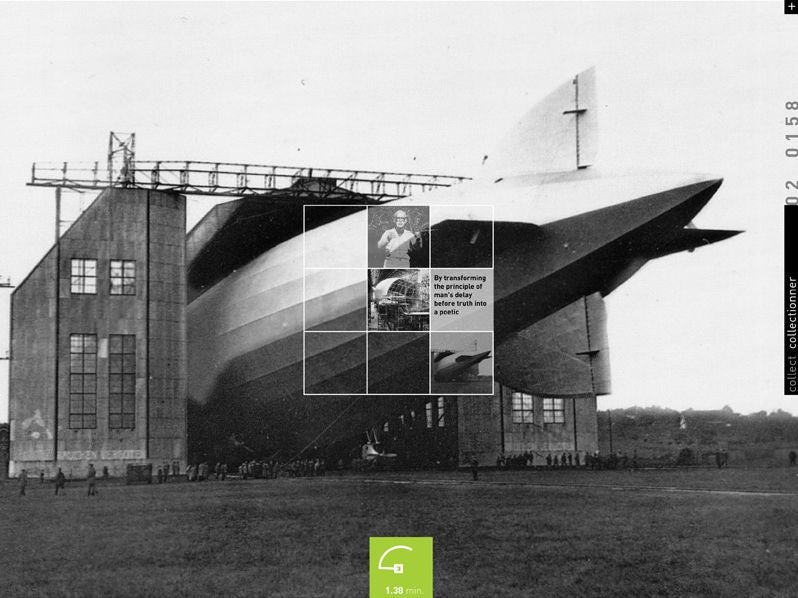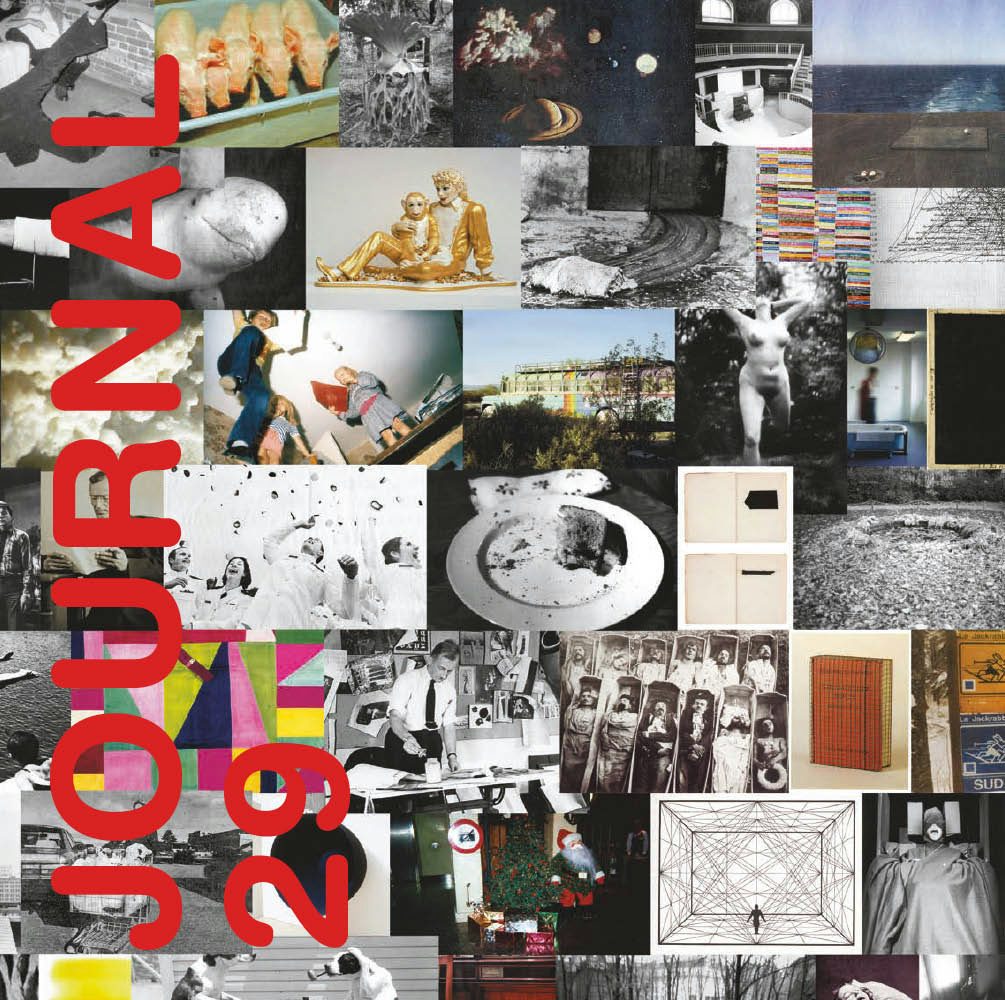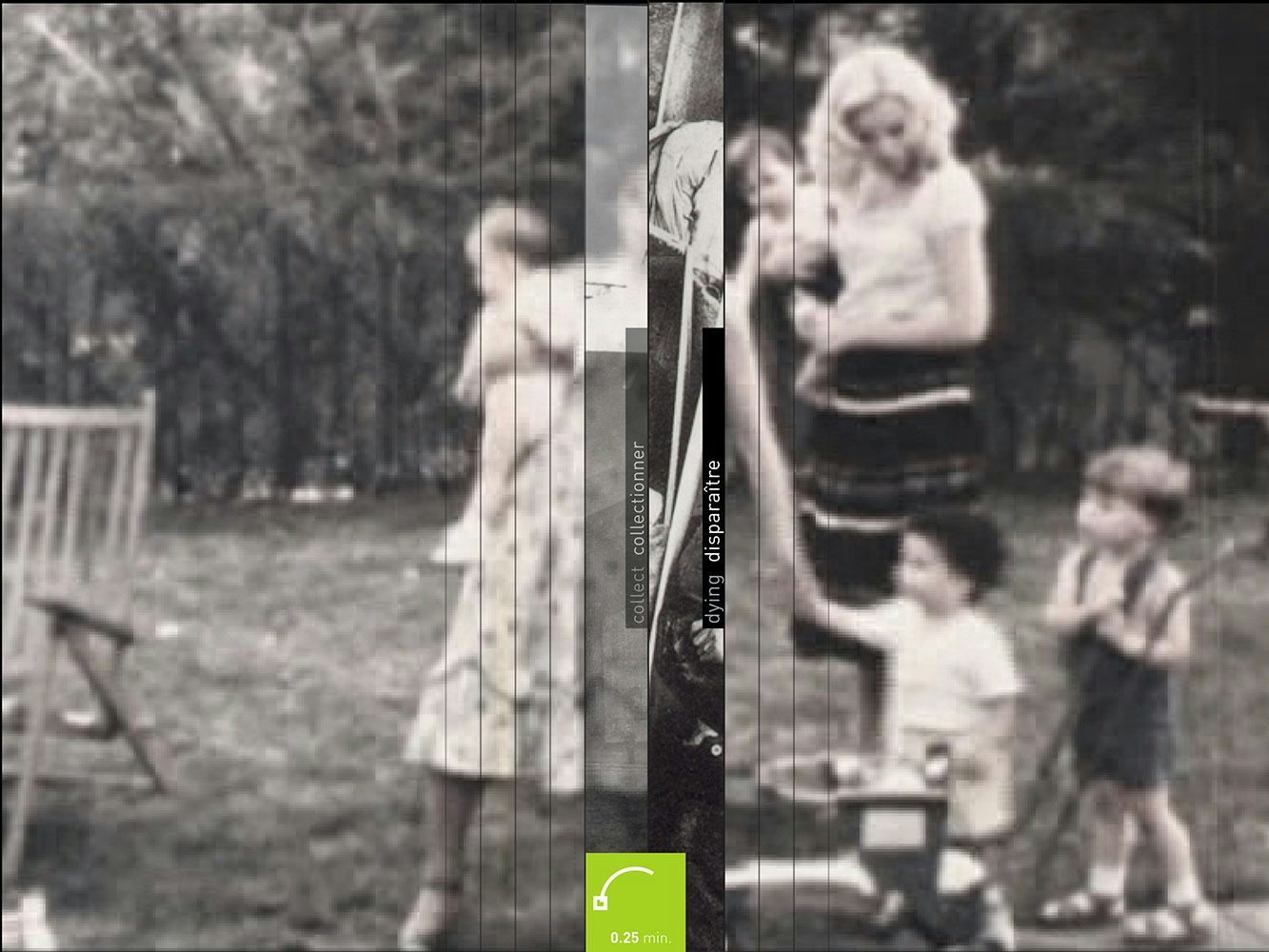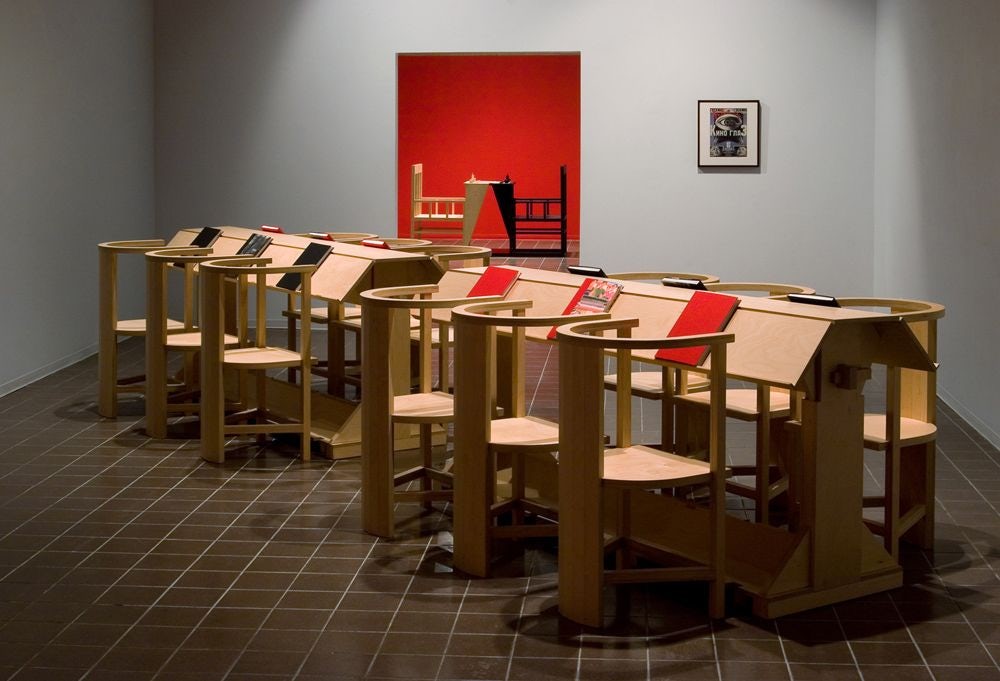
Angela Grauerholz
At Work And Play
2009.01.10 -
At Work And Play
An experimental artwork by Angela Grauerholz which offers a new way to navigate within an archive of more than 4,000 documents about the history of modernism, as well as the ability to visualize, in real time, the path created and to generate a different “memory palace” with every visit.
VINCENT BONIN
Angela Grauerholz’s 1980s work involved subtle shifts of a repertoire of common motifs in modern visual culture. The blurring of codes resulting from the photographic act represented an attempt to postpone their obsolescence. In Eglogue or Filling the Landscape (1995) and Sententia I to LXII (1996), these loci were grasped through the logic of the document and the archival system. The latter installation was both the end of a cycle and a harbinger of the artist’s more recent practice, characterized by another intellectual process pertaining to the organization of artefacts in space. Having momentarily abandoned the manufactured image, Grauerholz now intercepts heterogeneous documentary materials (e.g., pages from exhibition catalogues, magazines articles, text fragments, manuscripts) and conveys them into the space allotted to artworks.

With Reading Room for the Working Artist (2003-2004)1, she created twelve volumes to serve as the repository for that archive. Each book contains one or more themed headings under which Grauerholz collates contiguous objects. Far from reproducing encyclopedic categories, these headings derive from a subjective mapping of all the accumulated documents.
The visitor consults these books in an environment that partially reconstitutes the Reading Room of the USSR Worker’s Club, designed by Alexandr Rodchenko and featured in the Exposition internationale des arts décoratifs et industriels modernes in Paris in 1925. This staging allows visitors to discover a private constellation while sharing their experience of reading with peers, in a public space. At Work and Play (2008) adapts this project for a Web space, eliminating the tactile dimension of the printed pages but offering a more complex method of consultation. Grauerholz has chosen to exploit the polysemic nature of hypermedia, multiplying the access points to the content of her archive. The tree structure of keywords enabling indexing of the digitized materials remains invisible, however. That infrastructure is nonetheless mapped onto a cognitive interface of verbs evoking the artist’s work. These alternate between the quest for an object or its interpretation and pure playful exercise (collect, construct, sense, create, write, think, dying, live, tame). In many cases, the use of the verb as category also increases the performative coefficient of the image itself.
The video used for the main interface is another element that was present in the 2003-2004 installation; it consists of Super 8 family movies edited end-to-end (drawn from Hollywood narrative feature films) and various excerpts that foreshadow certain patterns seen in the work. The visitor causes the content of the archive to be displayed by clicking on one of the vertical bands formed by the verbs, and which striate the moving images. In the centre of the document, a nine-cell grid provides access to artefacts indexed under the same keywords (both the “large” and the “small” interface are made up of the same number of access points). To make the movement from one document to another fluid without negating their provenance, legends are displayed only if the visitor opens a box in the upper-right portion of the screen.
The thematic connections among the documents are often difficult to pin down on first visit. One must therefore peruse the corpus regularly to divine its main thrusts. Some samples gleaned from various convergent trajectories and accumulated clues seem particularly meaningful. One constellation of images inventories the identities of artists belonging to historical avant-gardes. The motif of the atelier also appears, functioning paradoxically as an anchor point of subjectivity and a site of industrial production prefiguring its loss. Group portraits of the members of early 20th-century radical artistic movements (Dadaists and Surrealists, for example) also recur, in the manner of a leitmotif. According to Grauerholz, they evoke a collectivist moment in which cultural modernity coincided exceptionally with an achievable social utopia. Other, transversal series of images make plain Grauerholz’s sustained research into certain figures (Aby Warburg, Ludwig Wittgenstein) and founding myths of that modernity. Alongside this iconographical archive, At Work and Play contains more than 500 quotations from literary and philosophical texts that, when read as fragments, have the effect of one long polyphonic commentary.2
Several documents function as models for the project itself, pointing the way to archival systems or collections. Grauerholz favours paragons born of the imaginations of 20th-century intellectuals and artists that escaped the norms of institutional classification (Warburg’s Atlas, Andy Warhol’s Time Capsules, Walter Benjamin’s Arcades Project, Marcel Duchamp’s boxes, materials from collages by Gilbert and George). This action of constituting constellations of objects here amounts to a staging of the cosmos on a human scale. The 20th-century corollary to this praxis was the attempt to erase the boundaries between art and everyday life, as evident in the concept of the “total work of art.”
All of these configurations are themselves porous, because At Work and Play causes the universe of the artist to resonate with culture in the broader sense. According to Paul Ricœur, subjective memory cannot exist without a discursive translation of its content: our past and present experiences are stated by means of collective references, and individual recollections manifest themselves by means of the language shared by a community of speakers.3 The author Christoph Wulf (cited in At Work and Play) reiterates this postulate in his assertion that one’s world-view and self-image are interdependent.4
The visitor can also take part in this reflexive movement by visualizing his or her own consultation of the archive. Each digitized artefact has a unique identifier that assigns it an address in the tree structure of the relational database. As the visitor progresses through the site, a two-dimensional schema makes these trajectories visible in real time. By switching to “build” mode, the visitor can crystallize this paradigm in the form of an object that is assimilated to a “memory palace.” The indexed documents are also redeployed into a syntagm representing the space-time coordinates of the visitor’s “navigation” (position in the database, duration of the “arrest” on the image or text). This object draws the visible portion of a modular architecture as it is being built, but is erased if the visitor chooses to start over or leaves the site. The irreversible nature of the experience, combined with this spatial virtuality, evokes the magic block metaphor postulated by Freud to describe the psychic apparatus: although writings are inscribed, they are erased superficially by interruption of the contact between the celluloid sheet (perception) and the wax tablet (the subconscious). At Work and Play also summons the Barthesian postulate whereby the birth of the Reader comes at the cost of the death of the Author.5 Here, these two instances constantly exchange their functions in an economy of meaning based on both appearance and disappearance. This gives rise to unlocatable archives that are conjugated in the present while simultaneously allowing for the imagining of a past and a future lying beyond the reach of the gaze.
This project is a production of VOX in association with Sylvain Allard, graphic designer, and Clenche Inc. and was made possible thanks to financial assistance from the Canada Council for the Arts, as well as the Hexagram Fund.
At Work and Play is no longer accessible due to the obsolescence of Flash Player, which is no longer supported by browsers.

